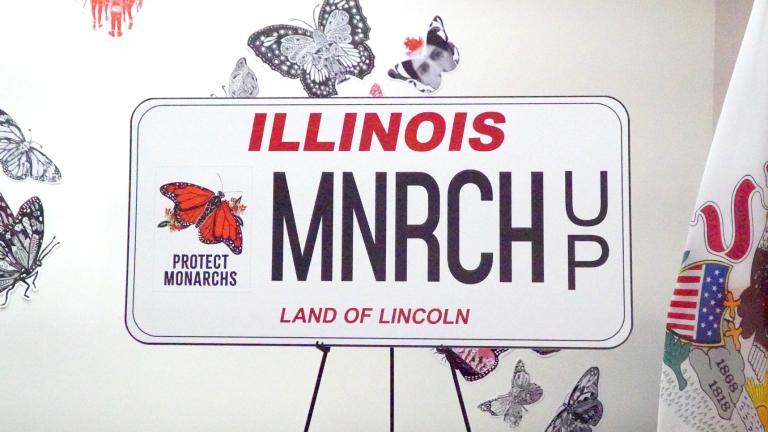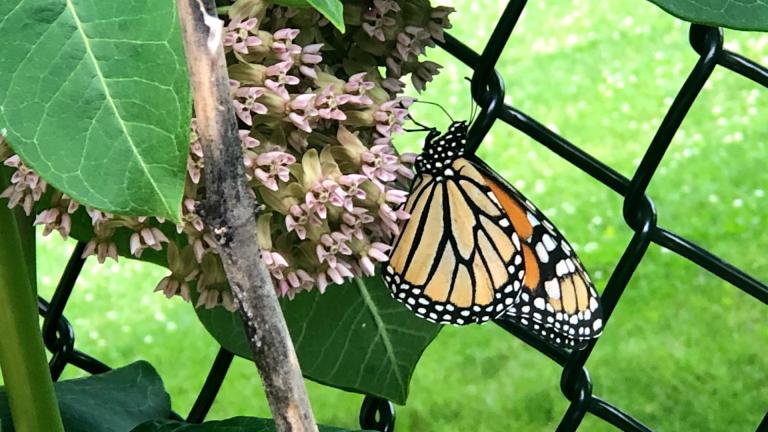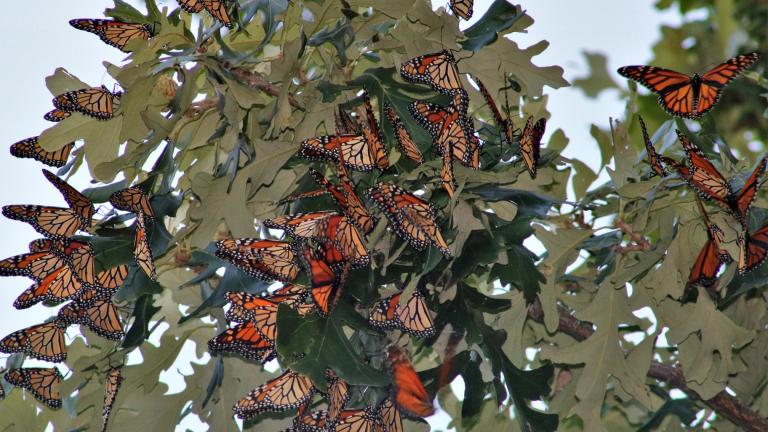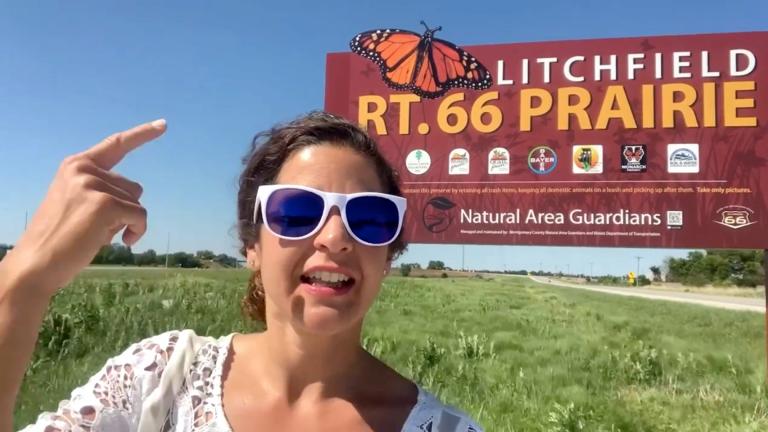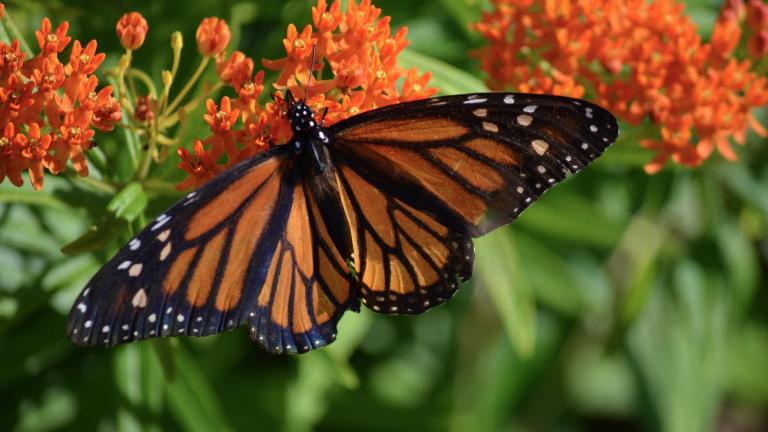Video: Joining “Chicago Tonight: Latino Voices” is Aster Hasle, lead conservation ecologist at the Field Museum’s Keller Science Action Center. (Produced by Emily Soto)
The 2023-24 count of monarch butterfly colonies wintering in Mexico has left conservationists reeling, after the recently released results of an annual survey showed the species occupies just .9 hectares (or roughly 2.2 acres) of forest — close to a 60% drop from last year and a near record low.
Aster Hasle, lead conservation ecologist at the Field Museum’s Keller Science Action Center, was in the middle of a staff meeting last week when the numbers were reported.
“I was devastated, honestly,” Hasle said. “I texted three other people who were in the meeting, and we stopped paying attention to the rest of the meeting.”
The population of eastern monarchs — which migrate between central Mexico to breeding areas in Canada and the U.S. — can be expected to fluctuate from year to year, Hasle said, but to see them fall even further from already low numbers was tough to swallow.
“They’ve been at around two hectares for a number of years” — six hectares has long been the accepted threshold for long-term survival — “and there had been some thought, maybe they can sustain there. We haven’t seen them have a drop like this since 2013,” Hasle said.
Monarchs have been hit hard by the disappearance of milkweed from the landscape, milkweed being the only plant where the butterfly lays its eggs. Deforestation of the monarch’s wintering grounds in Mexico has also been a significant factor in their decline.
But Hasle and others are attributing the plummet in 2023-24 to last year’s incredibly hot and dry conditions in the southern United States, which likely affected flower production. Essentially, as monarchs made their way to Mexico, they didn’t find much food to fuel their flight.
“It reflects the vulnerability” of the population, Hasle said. “If it is a bad situation in terms of flower resources, or it is hard for them to find the right elevation to over-winter, or storms hit along migration route or at the over-wintering grounds, an individual butterfly doesn’t have a very good chance of making the migration. ... It’s the death by a thousand cuts.”
And, as Hasle noted, the decline of monarchs not only in the current year but over the past two decades has to be viewed in the broader context of the plight of insects as a whole.
From the effects of climate change, to the loss of or fragmentation of habitat, to the proliferation of pesticides, “all of these things that we’re talking about with monarchs are really an indicator of globally what is happening for insects,” they said.
And not just insects.
 (U.S. Fish and Wildlife Service Midwest Region)
(U.S. Fish and Wildlife Service Midwest Region)
According to a report issued Monday by the United Nations’ Convention on the Conservation of Migratory Species (CMS) of Wild Animals — “The State of the World’s Migratory Species” — 44% of migratory species monitored globally by group are in decline, from whales to elephants to monarchs.
“Unsustainable human activities are jeopardizing the future of migratory species — creatures who not only act as indicators of environmental change but play an integral role in maintaining the function and resilience of our planet’s complex ecosystems,” be it pollinating plants, transporting nutrients or storing carbon, Inger Andersen, executive director of the U.N. Environment Programme, said in a statement.
“Migratory species tell us how nature is doing. How our planet is doing,” Andersen said. “Migratory species are in trouble. That puts humanity in trouble.”
The U.N. is calling for concrete conservation action, a call that, at least when it comes to the monarch, Chicago is well-positioned to answer.
It’s as simple, Hasle said, as planting milkweed.
“Monarchs have to have milkweed ... that is a thing we can do,” they said. “We can’t water the South; we can’t, in the moment, change the trend toward globally warmer temperatures. But when monarchs do get here in June — and we’ll get some — our role in the Midwest is to build that population back up ... to build the largest number to give them the best chance to deal with whatever challenges they have on the southern journey.”
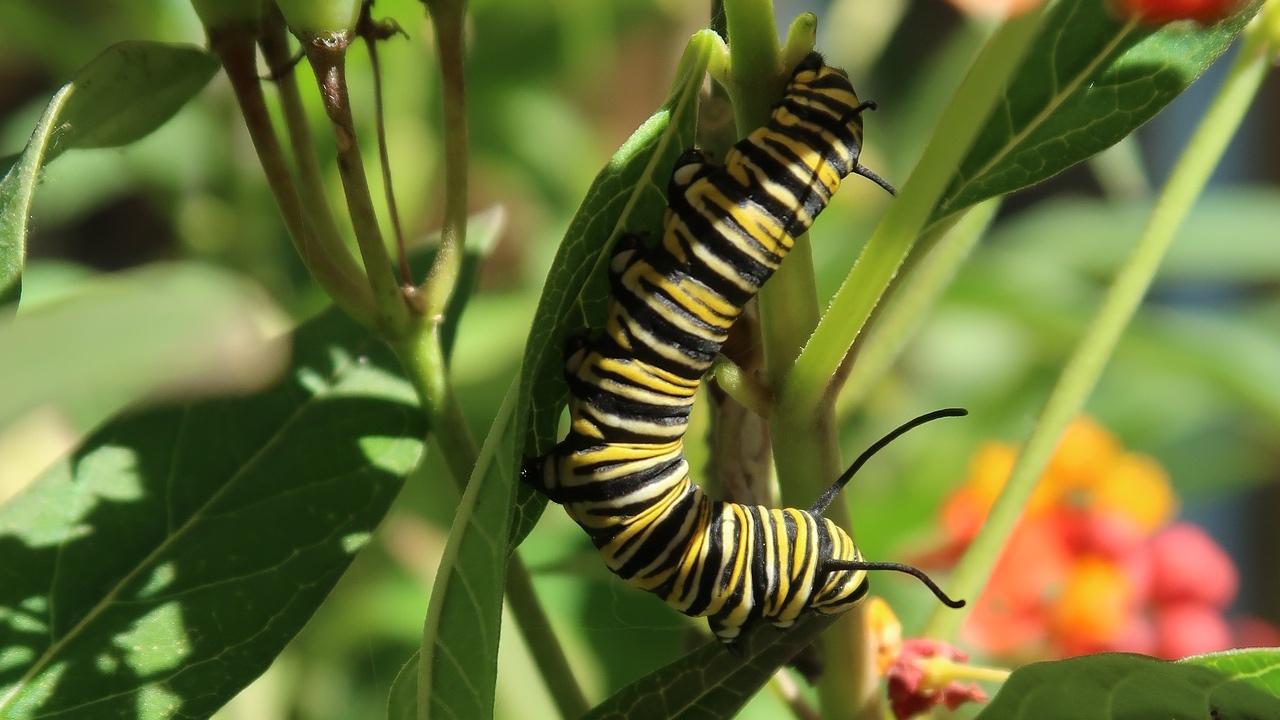 Monarch caterpillar. (Geneva Bell / Pixabay)
Monarch caterpillar. (Geneva Bell / Pixabay)
Having spent the past several years gathering data as part of an urban monarch monitoring project (the results of which are still awaiting publication), Hasle said every milkweed stem matters.
“From what we’ve seen from our work, monarchs absolutely use milkweed in cities. They use milkweed on rooftops and balconies and patios and six plants in somebody’s alley between the garage and the alleyway,” they said. “I know that having 12 milkweed in my yard is not going to solve global climate change but it’s a thing that I can do every day that is that really tangible ... that is part of the solution.”
Planting other blooming flowers in tandem with milkweed boosts the likelihood that monarchs will be attracted to a garden, Hasle said, and added that it’s vital for all plants to have been grown pesticide-free.
“There is a lot that we can do here to provide habitat that’s going to help,” they said. “And the things that we do for monarch butterflies, the habitat that we create, is incredibly valuable for so many other pollinators. It’s incredibly valuable for our native bumblebees, for beetles, for wasps, for flies, for hummingbirds, for all of these other species that are also super important on the landscape.”
People who lack outdoor space for gardening can contribute to insects' survival by volunteering at or otherwise supporting large habitat areas like Midewin National Tallgrass Prairie, Hasle said.
“The great thing about insects is that small spaces can provide habitat. But that doesn’t mean large spaces aren’t also super important. Because we’re going to need all of that,” they said. “Because ultimately all the area that’s corn had milkweed in it. And we’re not getting that back.”
It’s not clear, Hasle said, how the latest monarch count will affect its status for listing as an endangered species by the U.S. Fish and Wildlife Service. “This has to be part of the consideration this year and we’ll just wait and see,” they said. “In a certain sense, for us in Chicago, it doesn’t change what we would do. We would continue creating habitat.”
Note: This article was published Feb. 13, 2024, and updated with video Feb. 15, 2024.
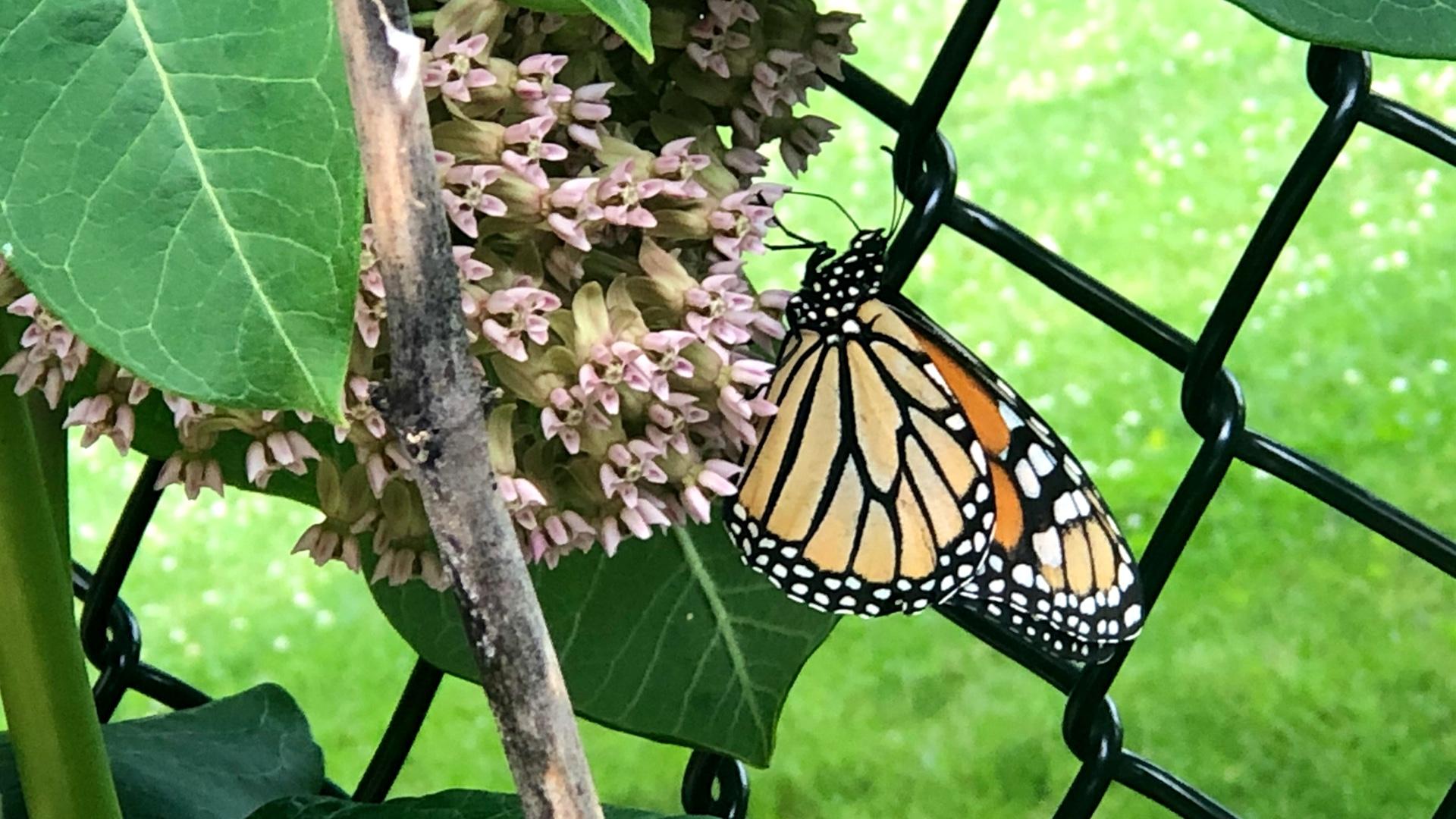 A monarch butterfly cozies up to milkweed in a Chicago yard. (Patty Wetli / WTTW News)
A monarch butterfly cozies up to milkweed in a Chicago yard. (Patty Wetli / WTTW News)
Contact Patty Wetli: @pattywetli | (773) 509-5623 | [email protected]

